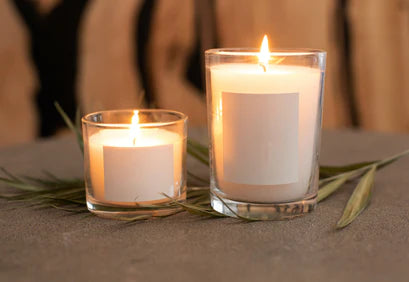4 min read / 29 March 2024 / yasmin sharp
How To Carry Out A Burn Test
Learn how to conduct a burn test on your homemade candles to ensure quality, safety, and optimal performance.
Share this post

Once you have made your first candle, there is another vital part of the process that needs to be completed - carrying out a burn test.
This will give you a much clearer idea about the quality of the candle in terms of the wax, wick and fragrance load you have used.
Every candle type burns differently and by conducting the burn test you can see if any changes need to be made to the flame source to ensure it performs well.
We explain how to do burn tests on candles and what you should keep an eye on during the process.
What is a candle burn test?A candle burn test is a method of testing that allows you to check the stability of the wax and flame once it has been lit. Candles are burnt under controlled conditions so you can observe the wick, flame and wax, and ensure it can meet and maintain certain performance and safety standards. Ideally, the candle should not:
Candle tests can sometimes last for a few weeks at a time, as each candle needs to be burnt until it fails or is used in full. It’s especially important when creating bespoke private label products for a customer. |

Why do you need to conduct a candle burn test?
Whether you are selling private label products, gifting or simply making candles for personal use, candle burn testing has an important role to play.
As we mentioned above, a candle burn test is designed to ensure that the candle performs well and is safe to use.
It will also reveal the strength of the fragrance throw and whether any alterations need to be made to the recipe.
A candle burn test will also reveal whether you have the right-sized wick, as the wax and fragrances you use can influence the burn performance.

How to test burn a candle
Before you start burn testing, you should ensure that the candles have been given enough time to cure.
Starting the test too early could create a misleading result, as the composition of wax evolves as it hardens.
You will need the following materials for the burn test:
- Candle
- Matches/lighter
- Timer/stopwatch
- Pen and paper
If you are planning to check more than one candle in a single test, it’s a good idea to label them with individual batch numbers so they can be easily identified.
Instructions on how to test burn a candle
- Place the candle on a stable, heat-resistant surface, making sure it is not positioned close to any flammable materials. If you are testing multiple candles, space them at least 3-6 inches apart.
- Using matches or a lighter, ignite the candle and start the timer. If you don’t have a timer, make a note of the current time on a piece of paper. This a crucial step in burn testing.
- After 2 hours, check the wick appearance and the melt pool to ensure it has the correct diameter. If the wick is too small, then it is likely that you will have a melt pool that is too small.
- Over the next 4 hours, observe the melted wax, flame and wick, making note of any irregularities, such as excessive smoking or wax dripping.
- Extinguish the candle after 4 hours and check the candle wax. A candle can pass a burn test if it has an even burn across the full width of the wick and there is less than 1 cm of wax remaining.
- Let the candle cool for about 5 hours and repeat steps 3,4 and 5 until all the wax has been burned.
The candle has not passed the burn test if there is more than 1 cm of wax remaining or it has not burned evenly across the width of the candle.
How to check you have the correct the wick size for your candle
Choosing the right wick for your candles doesn’t have to be tricky, but it’s important to check. If the wick for the candle is too small if you see:
- Tunnelling in the wax or a large amount of wax on the sides of the candle.
- That the flame has self-extinguished before the candle has finished burning.
- A lot of wax on the edges, even after the candle has been lit multiple times.
The candle wick is too large if you see:
- Too much black smoke or soot emitting from the wick.
- That the melt pool is too large.
- The temperature exceeds 60°C.
- Carbon balls that are larger than 5mm.
- The flame reaches a height greater than 75mm.

Final thoughts
Once you learn how to do a burn test on candles it should give you a better idea of what to look out for when you are making them, whether you’re making them for use at home or for a private label customer.
Testing burning a candle will reveal how the wax melts, whether you have an appropriately sized wick and the strength of the scent throw.
It’s a process that will take at least 4 hours to complete, depending on the size and type of candle you are testing, and it can ensure your creation not only performs as you hoped but it will also be safe to use.
If you’re looking for high-quality essential oils and fragrance oil that won’t break the bank, Nikura’s wholesale program could be the perfect solution for you. Whether you’re making candles to give to friends and family or to sell at local markets and events, our wide range of products come at year-round discounts. Sign up is quick and easy, and gives you instant access.









